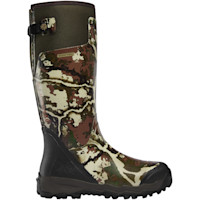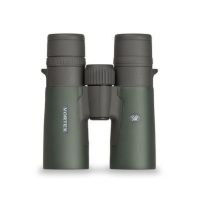
Here's an interesting, fun fact that really isn’t relevant to deer hunting at all: Researchers have found cattail starch on Paleolithic grinding stones dating back as far as 30,000 years. This is good to know if the zombie apocalypse ever comes and you need some starch in your diet, provided you’ve got a mortar and pestle.
While humans have a long history of utilizing these reedy, water-loving plants as a source of carbs, deer love them for a different reason—cover. Throughout many of the flyover states that host some of the biggest whitetails in the country, wetlands dot, divide, and connect the landscape. Wherever the shallow water is, that’s where the cattails will be.
It’s also where the bucks will often be, especially as the season progresses.
Mapwork and Observation If you know there are some cattail sloughs on your hunting grounds, then you know where to start. If not, open up your onX app and toggle on over to the topo layer. This will show you surface water and wetlands that are likely to be covered in cattails. When you find a few of these, toggle back to the satellite layer.
The goal isn’t just to find cattails—that’s a pretty easy task. Instead, you’re looking for specific spots in the cattails where bucks can bed. Some of these places will be obvious on satellite imagery. Patches of willows or dogwoods along the cattails are a great start because they indicate edge cover and slightly higher ground. Mark every one of these tiny islands of cover.
Also look for fingers of cattails that extend out from the main sloughs. These are where bucks are most likely to bed because they can keep track of approaching danger and maintain multiple routes for escape. I run bird dogs through late-season cattail sloughs every week until the pheasant season in Minnesota closes, and these are the places where I frequently encounter good bucks on public lands.
Often, even with a few hunters and a few dogs, you almost have to step on the bucks to get them to move. They don’t like to leave this cover and will only do it as a last resort. That’s an important thing to remember when you’re putting together a hunting strategy.
Edge Hunting Finding buck beds in the cattails is easier than in most other types of cover. Trails will be obvious, and beds will be right on the trails or within a few feet of them. But hunting these beds is a whole different story.
If you’ve got a shotgun, rifle, or muzzleloader, then your job is to scout out likely bedding areas and post up nearby where the landscape gives you a bit of an advantage. Due to the flat nature of the land where cattails tend to thrive, this might be a slight elevation change of a few feet or it might mean using the one suitable tree anywhere near your chosen spot.
Pay special attention to your approach if you plan to sit close to a cattail point that might host a sleepy buck. If your wind is wrong, it’s over. If he sees or hears you, it’s probably over. He’s going to blow out the back, or more likely, ride out the daylight hours until you’re gone. Of course, if you’re gun hunting, you can always try to get deer to move either in the hopes he’ll give you a shot when he bails.
Bowhunters should take a different approach.
Ambushing Cattails You probably won’t be able to get into the cattails undetected, and if you do, you won’t be able to shoot more than a few feet once you’re in there. This means it’s an outside or nothing game for bowhunting cattail bucks, but the good news is you’ve got options.
Scouting beds, and trails leading to and from them, can tell you how bucks use the cattails. Long-range observation will clue you into this as well. Figuring out where bucks move shouldn’t be too hard, but setting up 20 yards away to kill them is.
I’ve tried everything here. Hub-style ground blinds, tree stands, portable tripod stands that leave you sticking out like a sore thumb-all of them. If you can utilize a single tree or small grove of trees near where you suspect a buck is bedding, that’s the best bet. You get a better vantage, and deer gravitate toward trees in a mostly treeless environment.
Setting up in a natural ground blind is another option. You won’t be able to see hardly anything, but if you get a shot it’ll be up close and personal. In this situation, your ears are your friends because a deer moving through the cattails make noise.
The key to all of this is understanding how important cattails can be to late-season bucks. In many places, it’s the absolute safest cover for them to live in during the hours between dawn and dusk, which is worth remembering no matter your weapon of choice.








